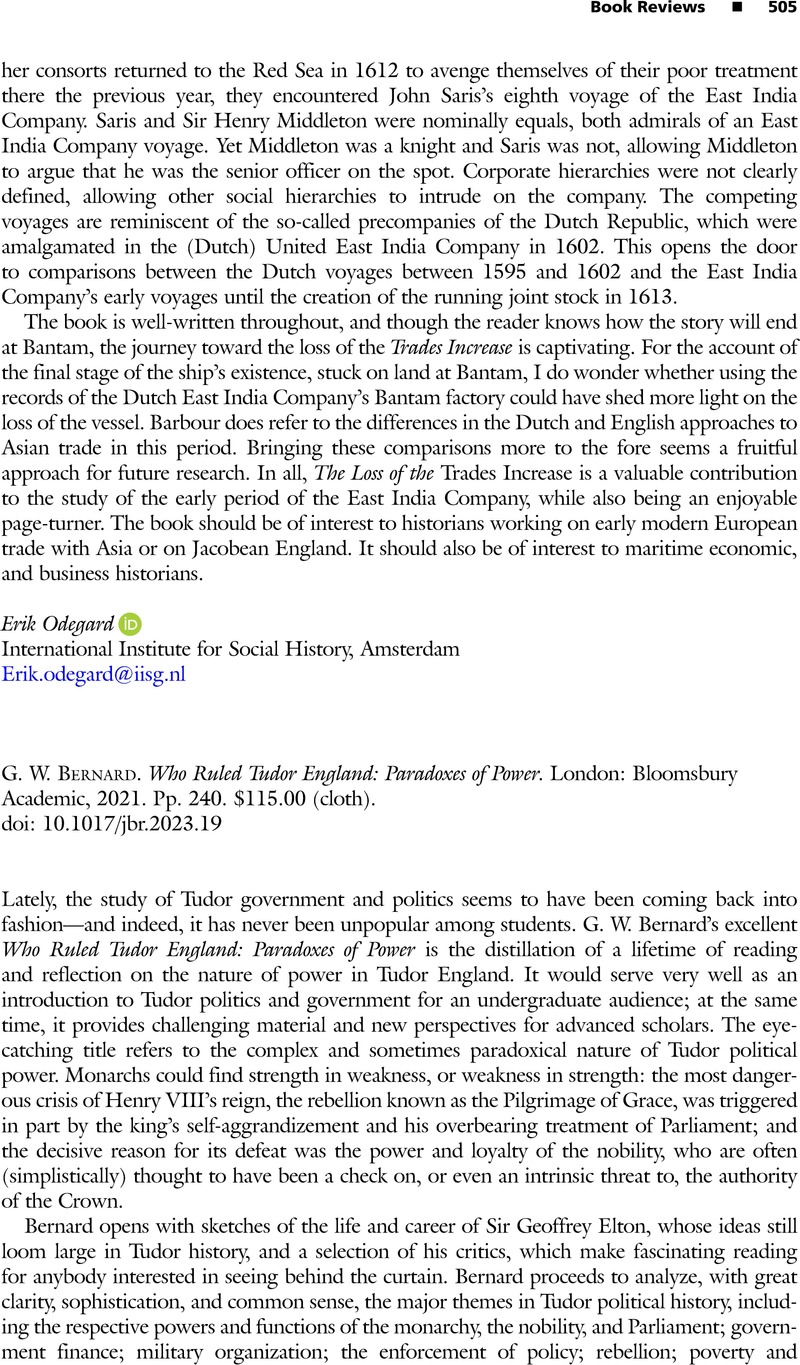No CrossRef data available.
Article contents
G. W. Bernard. Who Ruled Tudor England: Paradoxes of Power. London: Bloomsbury Academic, 2021. Pp. 240. $115.00 (cloth).
Review products
G. W. Bernard. Who Ruled Tudor England: Paradoxes of Power. London: Bloomsbury Academic, 2021. Pp. 240. $115.00 (cloth).
Published online by Cambridge University Press: 05 June 2023
Abstract
An abstract is not available for this content so a preview has been provided. Please use the Get access link above for information on how to access this content.

- Type
- Book Review
- Information
- Copyright
- Copyright © The Author(s), 2023. Published by Cambridge University Press on behalf of the North American Conference on British Studies



